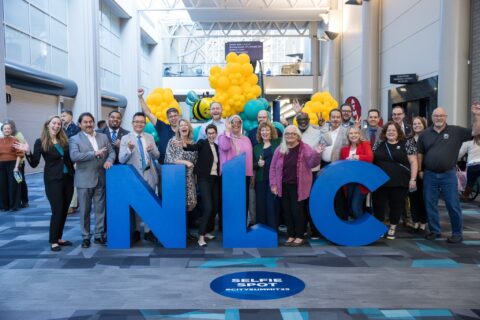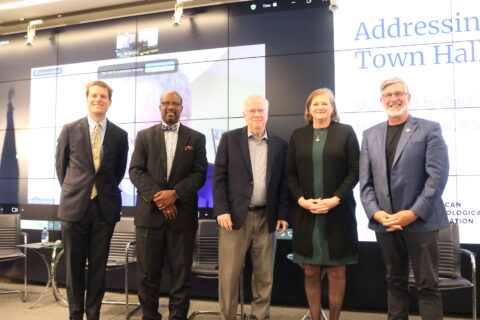Every ten years, the federal government undertakes one of its most critical responsibilities: the Decennial Census. This once-a-decade population count is the backbone of how our democracy functions and how federal dollars flow to communities across the country. However, the work does not begin on April 1, 2030. It is the culmination of a decade of hard work and preparation. Mid-decade tests allow the U.S. Census Bureau to focus on how to count historically undercounted populations while exploring innovative technologies and methodologies to bring the Census count into the 21st century. These tests are critical to laying the foundation for an accurate count in 2030.
Why the Census Matters
The Census is the country’s oldest and most comprehensive source of information about who lives in the United States. Its results are used to apportion seats in Congress, redraw voting districts and allocate federal funding for vital public services like healthcare, education, housing and infrastructure.
In fiscal year 2021 alone, data from the Census Bureau helped determine how over $2.8 trillion ($3.4 trillion in 2025 dollars) in federal funding was distributed. States often determine their allocation of funds to communities using Census data as well. These funds support programs that directly affect the day-to-day lives of Americans. For cities and towns, accurate Census data means fair funding and representation, while an undercount can have devastating consequences.
Unfortunately, the 2020 Census faced significant challenges that resulted in major undercounts across several states. According to the Government Accountability Office (GAO), six states experienced especially severe undercounts. In Texas alone, that miscount is projected to cost the state more than $25 billion in lost federal funding over the decade (PDF).
What is the 2026 Census Test?
To help avoid similar issues in 2030, the U.S. Census Bureau is planning a major test in 2026. The 2026 Census Test will take place in six strategically chosen areas that reflect the challenges of historically undercounted communities. The test will also include a nationally representative self-response testing component.
- Spartanburg, South Carolina
- Huntsville, Alabama
- Western North Carolina
- Western Texas
- Colorado Springs, Colorado
- Tribal lands in Arizona
These locations were selected because they include common obstacles to a full count, such as rural geography, nonmailable addresses, rapid new construction and hard-to-reach populations.
The goal of the 2026 test is to evaluate new and improved methods for counting everyone in America, especially people in communities that were missed in 2020. Beyond focusing on historically undercounted communities, new methodologies that will be tested include:
- Making it easier for people to respond on their own, especially online or by phone.
- Improving how census takers collect data in person when people don’t self-respond.
- Better counting of people in group quarters, like college dorms, military barracks and nursing homes.
- Enhancing outreach strategies that build public trust and encourage participation.
- Upgrading the infrastructure that supports Census operations.
- Processing data in real time, so issues can be identified and corrected during collection.
These innovations could be game changers for local governments trying to ensure their residents are fully counted and fairly represented.
2026 Census Test Timeline
- Summer 2025: Outreach begins, raising awareness in the test sites about the importance of participating.
- Fall 2025: Recruiting begins for temporary census jobs in the test sites.
- Spring 2026: Public begins responding to the 2026 Census Test.
- Census Day, April 1, 2026: Participants are asked to respond based on where they live as of this date.
- Summer 2026: 2026 Census Test concludes.
What’s at Stake
If the 2026 Census Test is canceled or underfunded, it will put the 2030 Census, and the communities who depend on it, at serious risk. Small and rural communities already face long-standing barriers to a full count, such as geographic isolation, limited internet access and difficulty mapping addresses. Without a robust test, these problems could go unaddressed and lead to another costly undercount.
The GAO has made it clear: uncertainty and canceled tests contributed significantly to the 2020 Census miscount. During the 2010s, delayed and inadequate funding forced the Bureau to cancel all tests in rural communities. Post-census analyses showed disproportionate undercounts of rural residents. Because the Bureau couldn’t test modern methods to count group facilities (e.g., military bases, college dorms, prisons), they had to use more costly and less accurate paper-based procedures. Failing to invest in a strong 2026 test would repeat the mistakes of the past. The cost of the census pales in comparison to the public, business and philanthropic investments that are based on census results.
A Pivotal Moment for the 2030 Count
We have a rare opportunity to strengthen the foundation of the 2030 Census while there’s still time to course correct. The 2026 Census Test is not just a bureaucratic step – it is constitutionally mandated and a chance to improve how we count everyone, everywhere.
Cities, towns, and villages have a lot riding on this. An accurate count ensures that every community gets the representation and resources it deserves. The National League of Cities is advocating for more funding because the Census Bureau needs more, not less, funding to ensure an accurate count in 2030.
Stay Informed
Sign up for NLC’s bi-weekly Federal Advocacy Update Newsletter to learn more about how we’re advocating for cities, towns and villages, plus ways to get involved.












